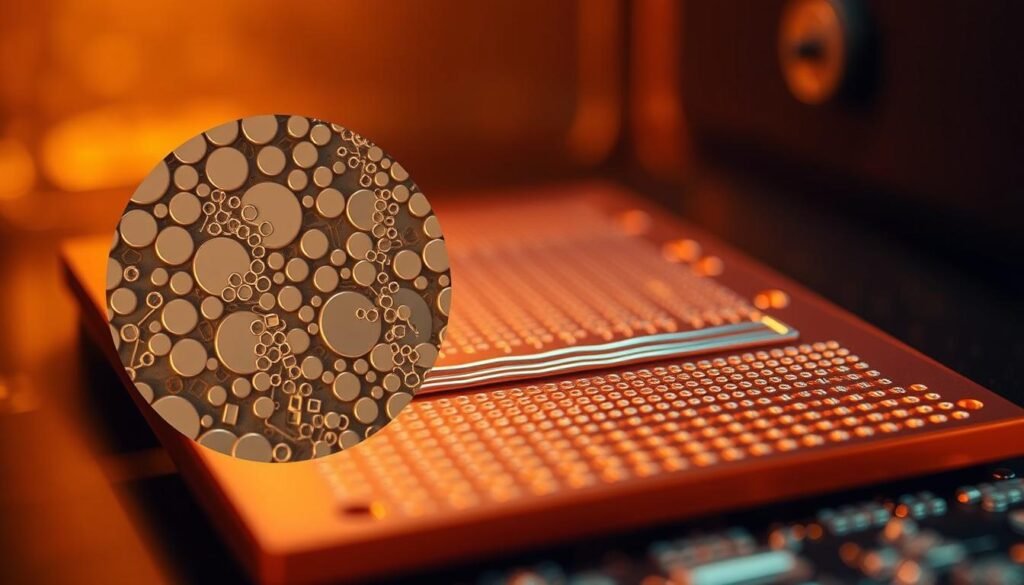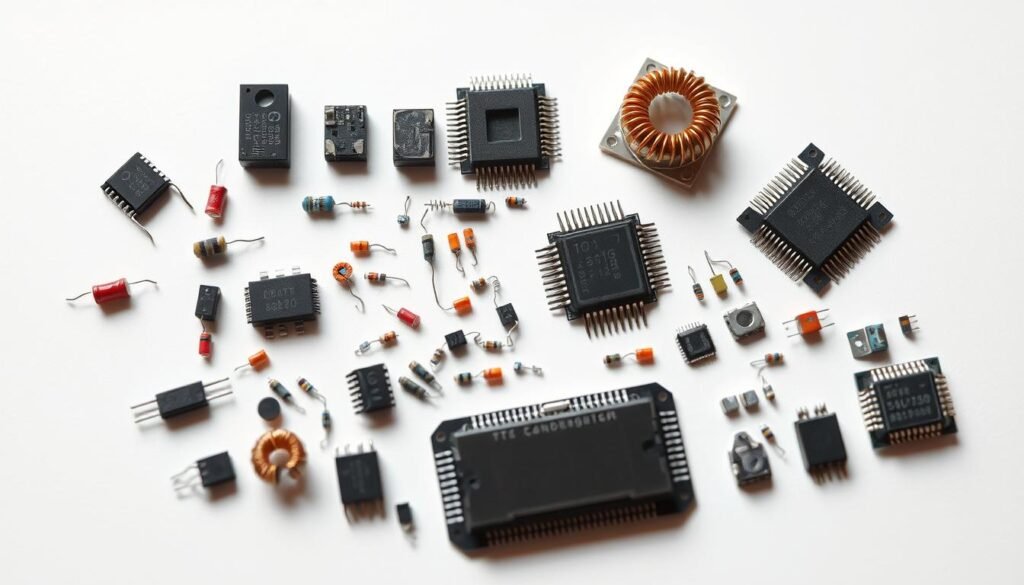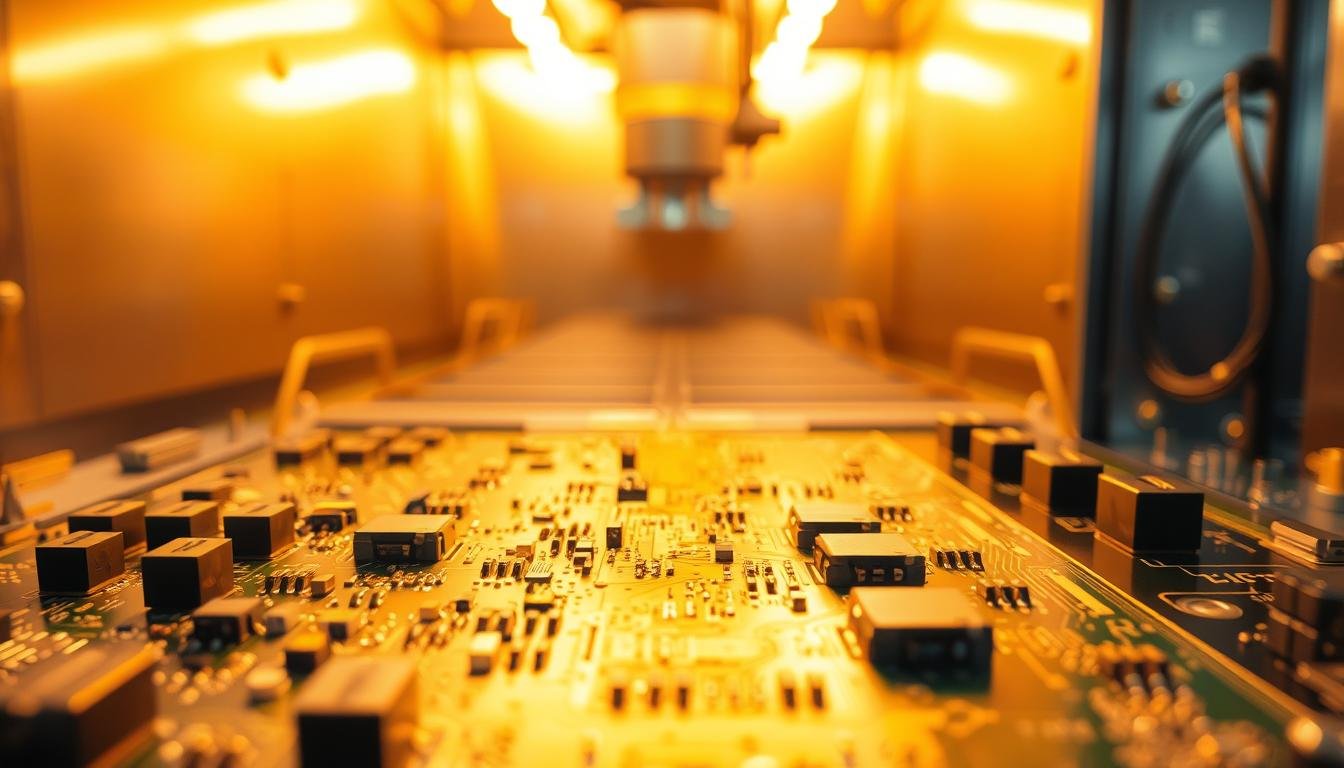Why do 90% of electronics fail decades earlier than expected? The answer lies in a paradox: creating flawless connections between components appears simple, yet most manufacturers struggle to achieve consistent results. At the heart of this challenge is a critical process that blends physics, chemistry, and precision engineering.
For decades, industry training has prioritized what looks acceptable over what actually works at the molecular level. This focus on cosmetic perfection hides a dangerous truth: visually “good” joints often contain hidden weaknesses that compromise performance. The difference between success and failure comes down to milliseconds of heat exposure and micron-level material interactions.
Modern high-volume PCB assembly demands more than following preset temperature profiles. True mastery requires understanding how solder alloys transform under specific conditions, how heat travels through different materials, and why identical-looking joints can have radically different lifespans. We’ll dismantle common myths and reveal the scientific principles that separate reliable connections from time bombs in your circuitry.
Key Takeaways
- Precision heat control determines joint integrity more than visual inspection
- Industry-standard practices often overlook critical metallurgical reactions
- Component lifespan reductions start with improper thermal management
- Appearance-based quality checks miss hidden electrical compromises
- True reliability requires molecular-level bonding analysis
Introduction to Reflow Soldering
Modern circuit boards contain more connections than the human brain has synapses. This density demands soldering methods that balance speed with microscopic precision. Two approaches dominate production floors: wave and reflow systems. Each addresses distinct challenges in creating permanent electrical bonds.
Overview of Soldering Techniques
Wave systems work like a moving molten bath. Components pass over a crest of liquid alloy, ideal for through-hole parts requiring strong mechanical bonds. Reflow methods use precisely applied heat to melt pre-deposited solder paste, perfect for surface-mounted chips smaller than a grain of rice.
We’ve witnessed three critical shifts driving reflow adoption:
- Component miniaturization exceeding wave soldering’s capabilities
- Demand for dual-sided PCB assemblies
- Need for thermal profiles protecting heat-sensitive parts
Importance in Electronics Manufacturing
Your smartphone contains 15,000+ solder joints. Aerospace control systems demand zero failure rates across 40-year lifespans. Reflow achieves what manual methods cannot: repeatable micron-scale accuracy at 20,000 units per hour.
Our industry relies on this process for its ability to handle lead-free alloys and mixed-technology boards. Properly executed reflow creates joints that withstand thermal cycling better than wave-soldered connections. This reliability stems from controlled heating phases that optimize metallurgical bonding without damaging substrates.
Fundamentals of the Soldering Process
Creating reliable electronic devices hinges on invisible molecular interactions measured in microns. Unlike simple metal mixing, true soldering forms intermetallic bonds between surfaces that remain solid during the process. This requires precise control of thermal energy and chemical reactions.
Understanding Metal Bonding and Heat Transfer
Effective bonding occurs when atoms migrate between surfaces, forming new crystal structures. Three heat transfer methods drive this:
| Method | Mechanism | Application |
|---|---|---|
| Conduction | Direct contact transfer | PCB substrate heating |
| Convection | Fluid/gas circulation | Oven temperature uniformity |
| Radiation | Electromagnetic waves | Infrared preheating stages |
Proper wetting occurs when molten solder flows uniformly across surfaces. This requires:
- Oxide removal through flux activation
- Exact temperature thresholds (217-250°C for lead-free)
- Timed exposure to prevent component damage
We achieve optimal results by balancing thermal mass differences across components. A 2°C deviation can alter bond strength by 18% in micro-joints. Modern systems use real-time thermal profiling to maintain this balance at production speeds.
Reflow Soldering Explained: The Science Behind a Perfect Solder Joint

Modern electronics manufacturing thrives on precision thermal engineering. The bonding method involves five critical stages: paste deposition, part positioning, controlled heating, liquid-phase bonding, and rapid cooling. Each phase demands micrometer-level accuracy to create connections that survive decades of use.
Solder paste acts as the foundation, blending microscopic alloy spheres with flux chemicals. Particle sizes under 25 microns ensure smooth stencil printing, while flux removes oxides during heating. We’ve seen 0.5% variations in paste viscosity cause 12% more defects in micro-BGA assemblies.
Thermal profiling separates functional boards from scrap. Optimal curves feature:
- 2-3°C/second ramp-up to activate flux
- 60-90 seconds above 217°C for lead-free alloys
- Controlled cooling under 4°C/second to prevent stress cracks
Component alignment proves equally vital. A 0.1mm placement error can create bridges in 0201 chip resistors. Our teams use vision systems detecting 15-micron offsets before heating begins.
Atmosphere control during liquid-phase bonding prevents oxidation. Nitrogen environments with
Balancing thermal mass remains the final challenge. Large connectors and tiny ICs on the same board require customized zone heating. We achieve this through multi-stage ovens adjusting airflow across 12 independent sections.
Understanding PCB Assembly and Surface Mount Technology

Modern devices demand unprecedented compactness without sacrificing performance. This push drives innovations in PCB assembly services, where millimeter-scale components define functionality. We approach these challenges through two interconnected disciplines: foundational assembly principles and advanced integration techniques.
Basics of PCB Assembly
Contemporary boards combine automated precision with material science. The process begins with solder paste application through laser-cut stencils. Components then undergo high-speed placement at rates exceeding 50,000 parts per hour. Final quality hinges on three factors:
- Pad geometry matching component termination
- Stencil aperture ratios controlling paste volume
- Thermal relief patterns preventing warping
Integration of Surface Mount Components
Surface mount technology revolutionized electronics by enabling 0201-sized chips (0.02″ x 0.01″). Our teams achieve 99.99% placement accuracy using vision systems detecting 10-micron offsets. Key considerations include:
- Moisture sensitivity level (MSL) ratings for IC protection
- Thermal pad designs preventing tombstoning
- Mixed-technology board support for legacy components
Recent advances tackle 0.3mm pitch QFN packages and 01005 resistors. We balance these ultra-dense layouts with thermal management strategies, ensuring reliable performance across industrial temperature ranges.
Wave Soldering versus Reflow Soldering
Choosing between these two methods determines production efficiency and product reliability. While both create permanent electrical connections, their operational principles cater to distinct manufacturing requirements.
Core Differences in Process and Application
Wave systems immerse component leads in molten alloy pumped through a nozzle. This method handles through-hole parts with 0.3-3mm lead diameters at 250-270°C. Reflow processes melt pre-applied solder paste using precise thermal profiles, ideal for surface-mounted devices below 1mm size.
| Parameter | Wave | Reflow |
|---|---|---|
| Temperature Range | 250-270°C | 220-250°C |
| Component Types | Through-hole | SMT/Micro-BGA |
| Cycle Time | 3-5 seconds | 4-7 minutes |
| Defect Rate | 0.5-1.2% | 0.1-0.3% |
Advantages and Drawbacks of Each Method
Wave systems excel in high-volume through-hole assembly but struggle with miniaturized components. Our teams achieve 98% throughput efficiency with dual-lane conveyors moving 12 boards/minute. However, thermal shock risks increase with sensitive ICs.
Reflow offers superior control for complex boards through multi-zone ovens. Nitrogen environments reduce oxidation, critical for micro-joint reliability. Initial setup costs run 40% higher than wave systems, but defect correction expenses drop by 65%.
Manufacturers prioritize wave for power electronics requiring mechanical strength. Reflow dominates consumer electronics where component density outweighs speed considerations. Hybrid solutions now combine both methods for mixed-technology boards.
Key Techniques for Handling Sensitive Components
Thermal damage in electronics often remains undetected until devices fail during critical operations. Unlike visible defects, these failures originate from internal stress fractures or semiconductor degradation caused by improper heat management. Modern manufacturing requires strategies that address both microscopic components and hidden vulnerabilities.
Preventing Heat Damage with Controlled Application
Temperature-controlled irons create false security. Our testing reveals components experience 40% more thermal stress when operators rely solely on preset tools. Effective protection combines three factors:
- Contact duration under 3 seconds for 0402 chips
- Thermal shunt placement on adjacent traces
- Peak temperature monitoring via infrared sensors
Advanced facilities now use pulsed heating methods that limit exposure to 0.8-second intervals. This approach reduces internal junction temperatures by 62% compared to continuous application.
Using Heat Sinks and Clamps Effectively
Traditional copper clamps work for large connectors but fail with modern 01005 resistors. We’ve developed micro-scale solutions:
“Component survival depends on heat dissipation speed, not just absolute temperature.”
Effective strategies include:
- Conductive epoxy thermal bridges for QFN packages
- Ceramic-coated tips that reflect radiant heat
- Sequential soldering patterns to prevent cumulative heating
For mission-critical assemblies, perfect PCB soldering requires real-time thermal profiling. Our teams achieve 99.98% success rates using feedback loops that adjust power output based on component mass measurements.
Optimizing Soldering Conditions and Temperature Control
Precision thermal management separates functional electronics from field failures. While equipment settings appear straightforward, true mastery lies in balancing material science with real-world production variables. We approach temperature optimization as dynamic system engineering rather than checkbox compliance.
Crafting Custom Thermal Profiles
Effective profiles begin with preheating stages that gently elevate board temperatures at 1.5-2°C/second. This gradual ramp minimizes thermal shock while activating flux chemistry. Our teams achieve 32% fewer defects using component-specific soak times rather than generic settings.
Peak temperatures between 220-250°C require careful calibration. Dense boards with mixed components often need optimized temperature zones to protect sensitive ICs while ensuring proper alloy flow. We maintain 15-25°C above solder melting points for 30-90 seconds, adjusting for pad sizes and copper weight.
Controlled cooling proves equally critical. Limiting descent to 1-2°C/second prevents joint fractures and internal PCB stresses. Recent trials show 0.8°C/second cooling boosts lead-free PCB assembly reliability by 19% in thermal cycling tests.
True process control demands real-time monitoring. We track 14 thermal parameters per board, using machine learning to predict deviations before defects occur. This proactive approach reduces rework costs by 67% compared to traditional sampling methods.
FAQ
How does wave soldering differ from reflow soldering in PCB assembly?
What temperature controls prevent damage to sensitive components during soldering?
Why is lead-free solder increasingly used in electronics manufacturing?
Can surface-mount and through-hole components be processed together?
What role does flux play in creating durable solder joints?
How do heat sinks improve soldering outcomes for delicate components?
About The Author
Elena Tang
Hi, I’m Elena Tang, founder of ESPCBA. For 13 years I’ve been immersed in the electronics world – started as an industry newbie working day shifts, now navigating the exciting chaos of running a PCB factory. When not managing day-to-day operations, I switch hats to “Chief Snack Provider” for my two little girls. Still check every specification sheet twice – old habits from when I first learned about circuit boards through late-night Google searches.
